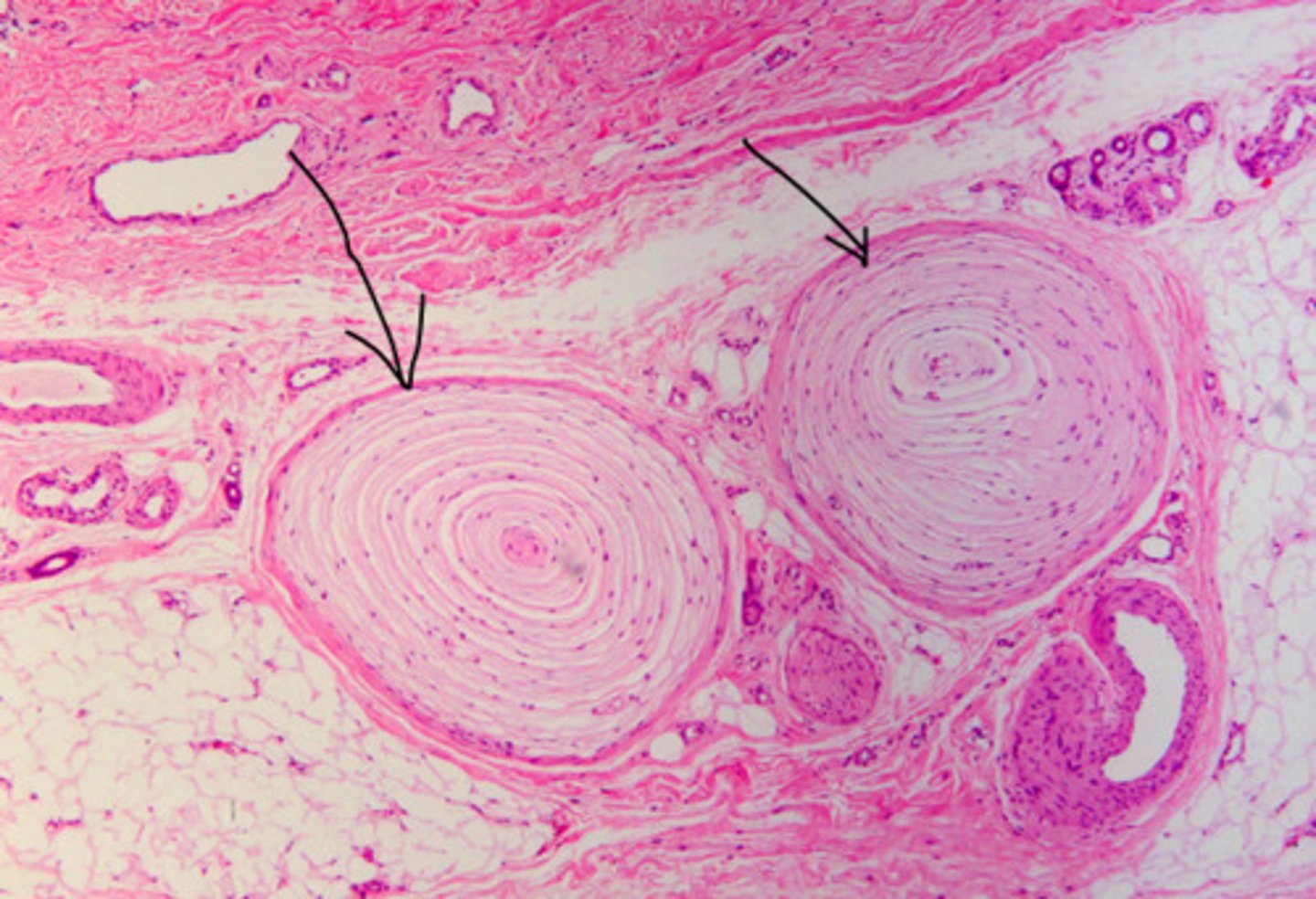Layers of the Skin
1/10
There's no tags or description
Looks like no tags are added yet.
Name | Mastery | Learn | Test | Matching | Spaced |
|---|
No study sessions yet.
11 Terms
Epidermis
the outermost layer of skin that contains epithelial tissue. Its avascular nature affects its role because it does not have any blood vessels in it.
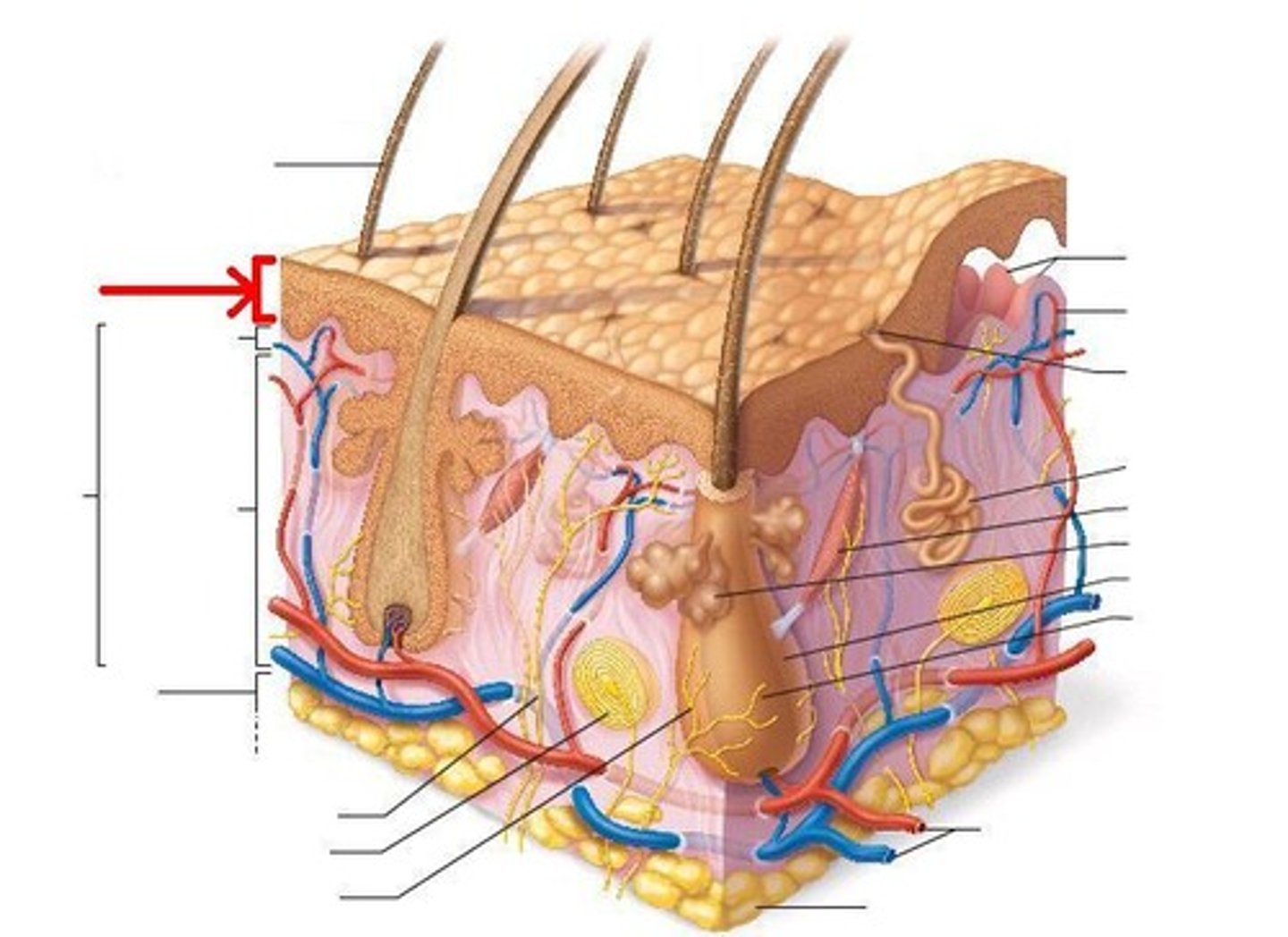
Stratum Corneum
outermost layer of the epidermis, which consists of flattened, dead keratinized cells
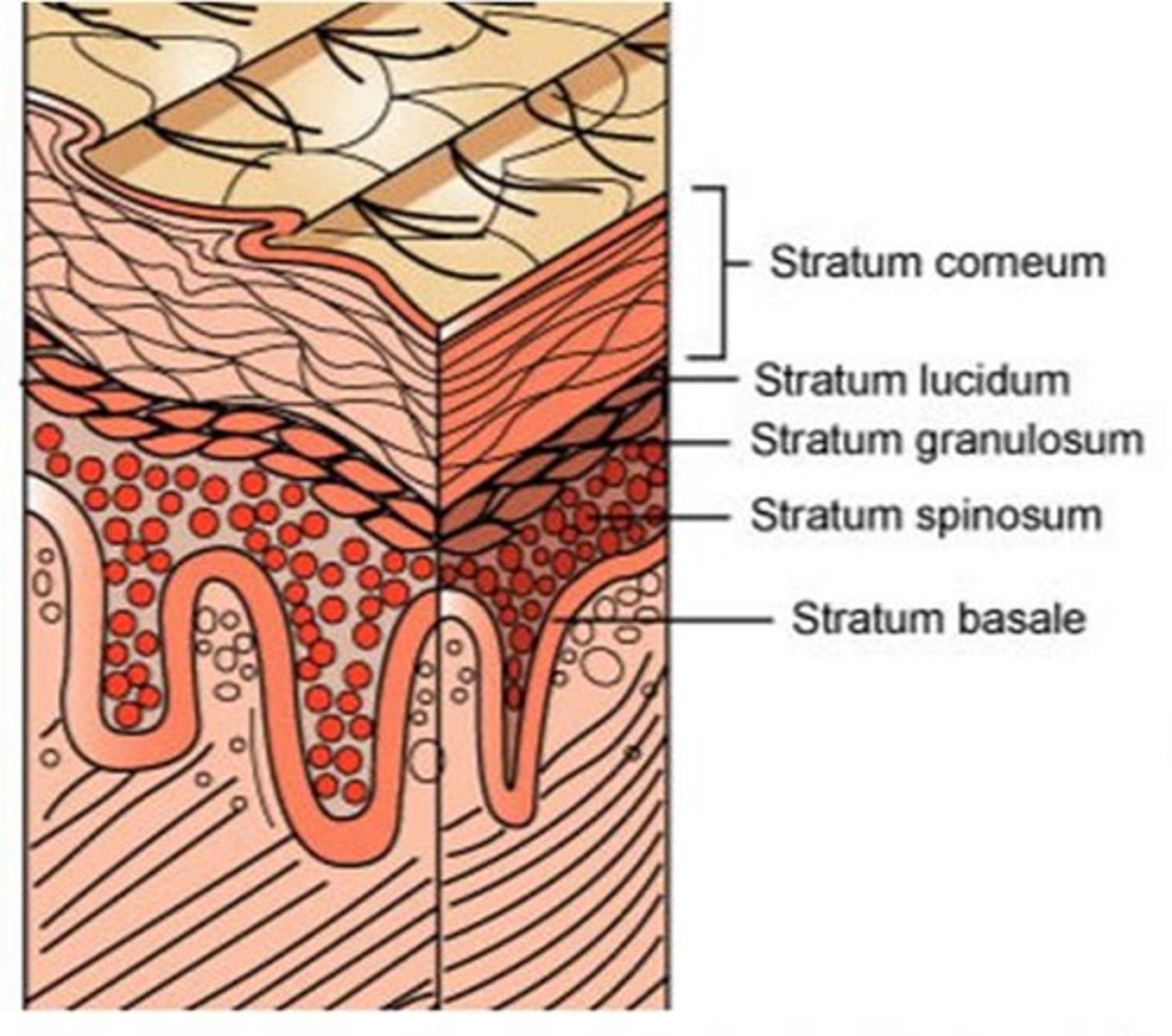
Stratum Lucidum
a layer of the epidermis found only in the thick skin of the fingers, palms, and soles
-located below Stratum Corneum
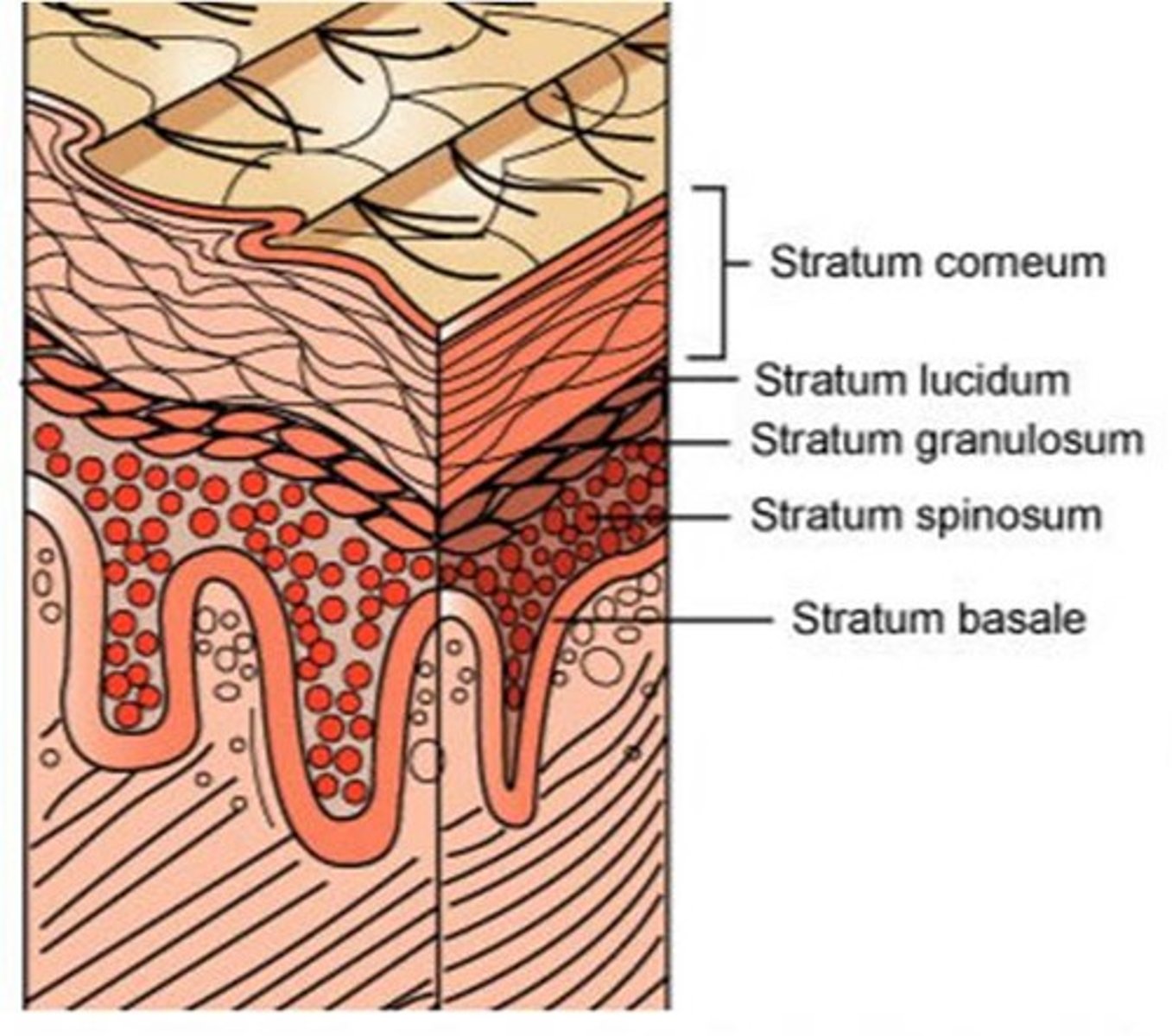
Stratum Granulosum
a layer of the epidermis where keratinocytes' nuclei and organelles begin to disintegrate, causing the cells to die.
-located below Stratum Lucidum

Stratum Spinosum
a layer of the epidermis that provides strength and flexibility to the skin.
-Located below Stratum Granulosum
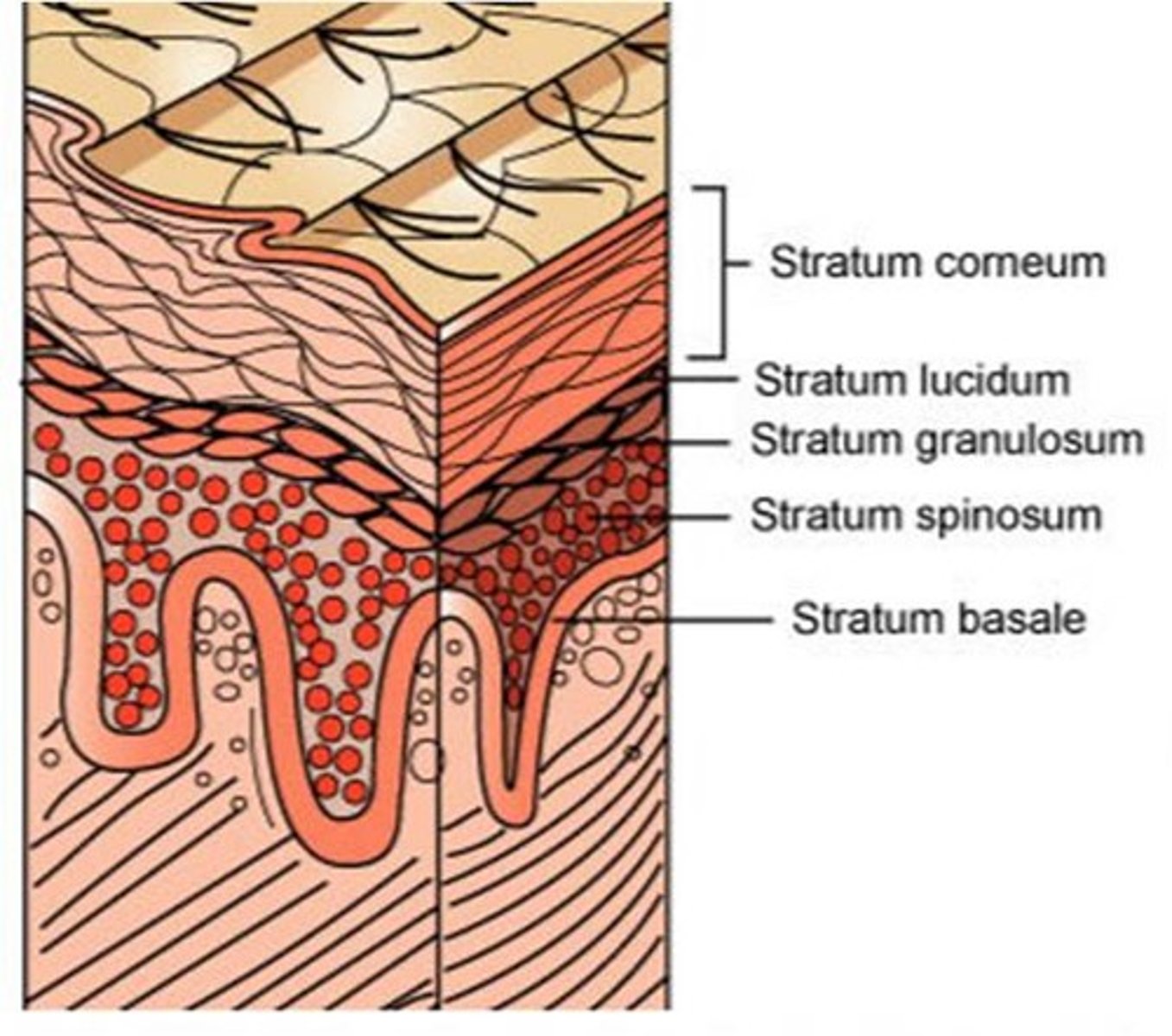
Stratum Basale
the deepest layer of the epidermis consisting of stem cells capable of undergoing cell division to form new cells.
-Located below Stratum Spinosum
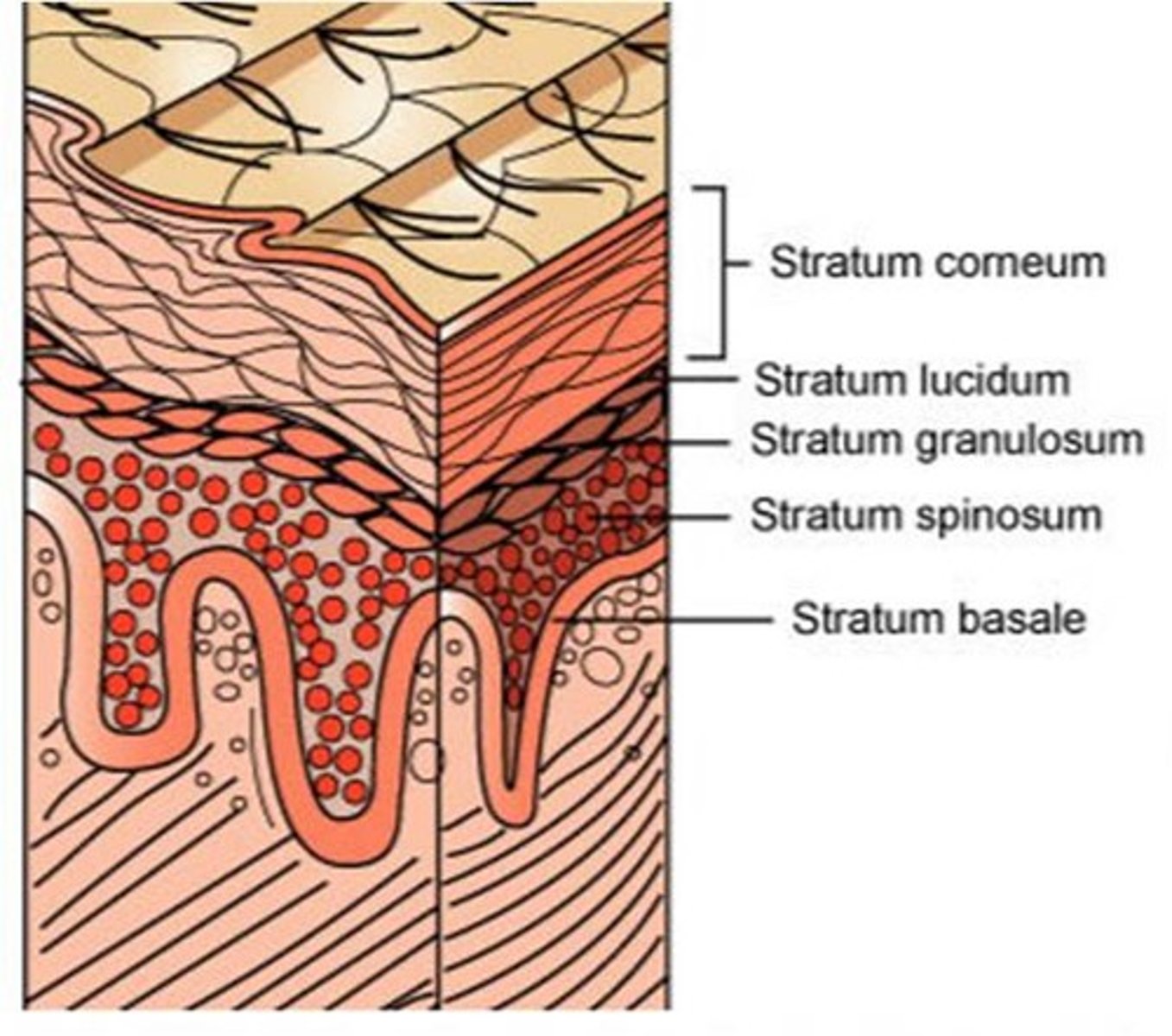
Dermis
underlies the epidermis and it is mostly fibrous connective tissue. While it is vascular (has blood vessels)
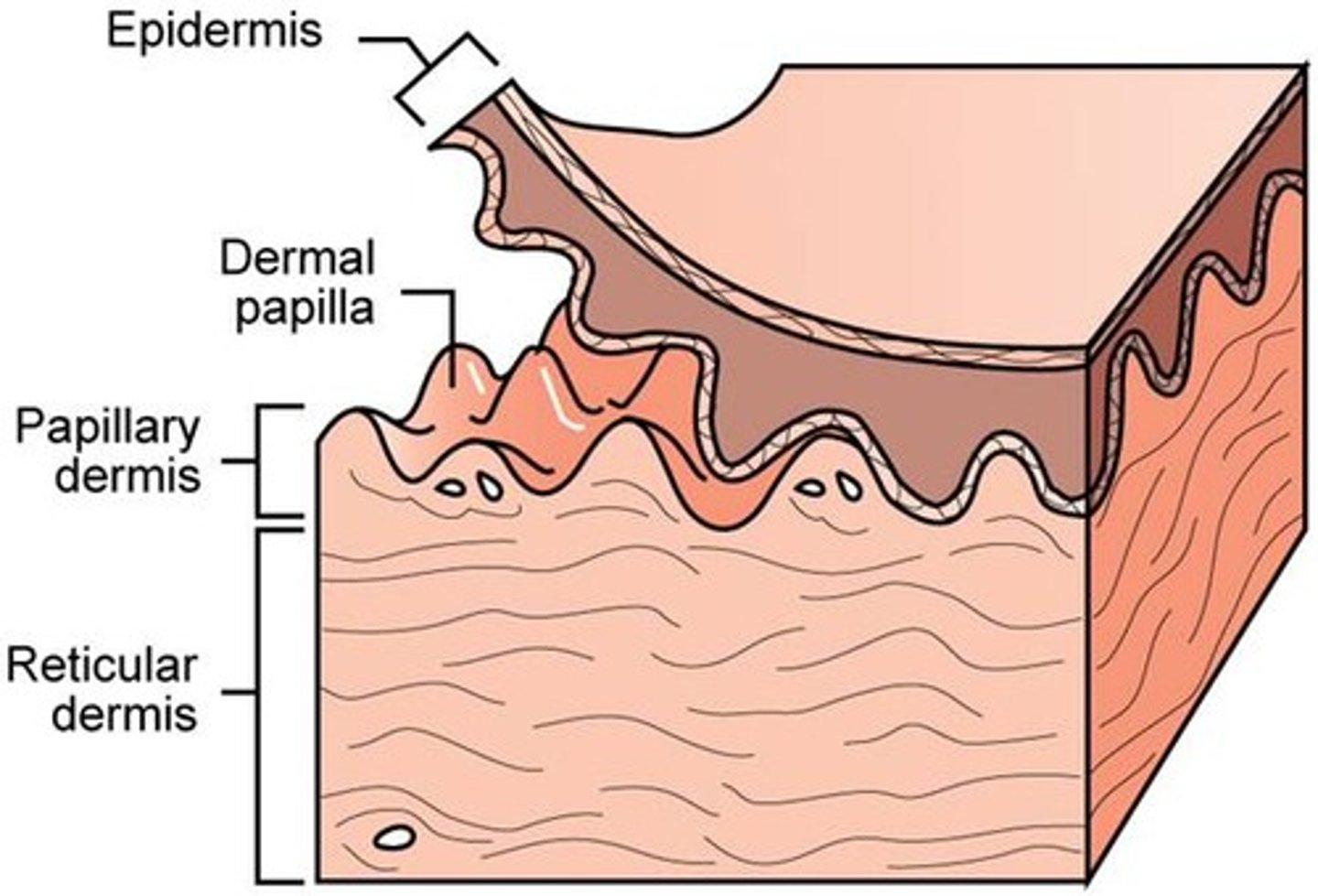
Hypodermis
Also called a subcutaneous layer, this is a layer of *fat located under the dermis of the skin. The hypodermis helps to insulate the body and protects underlying muscles and other structures.
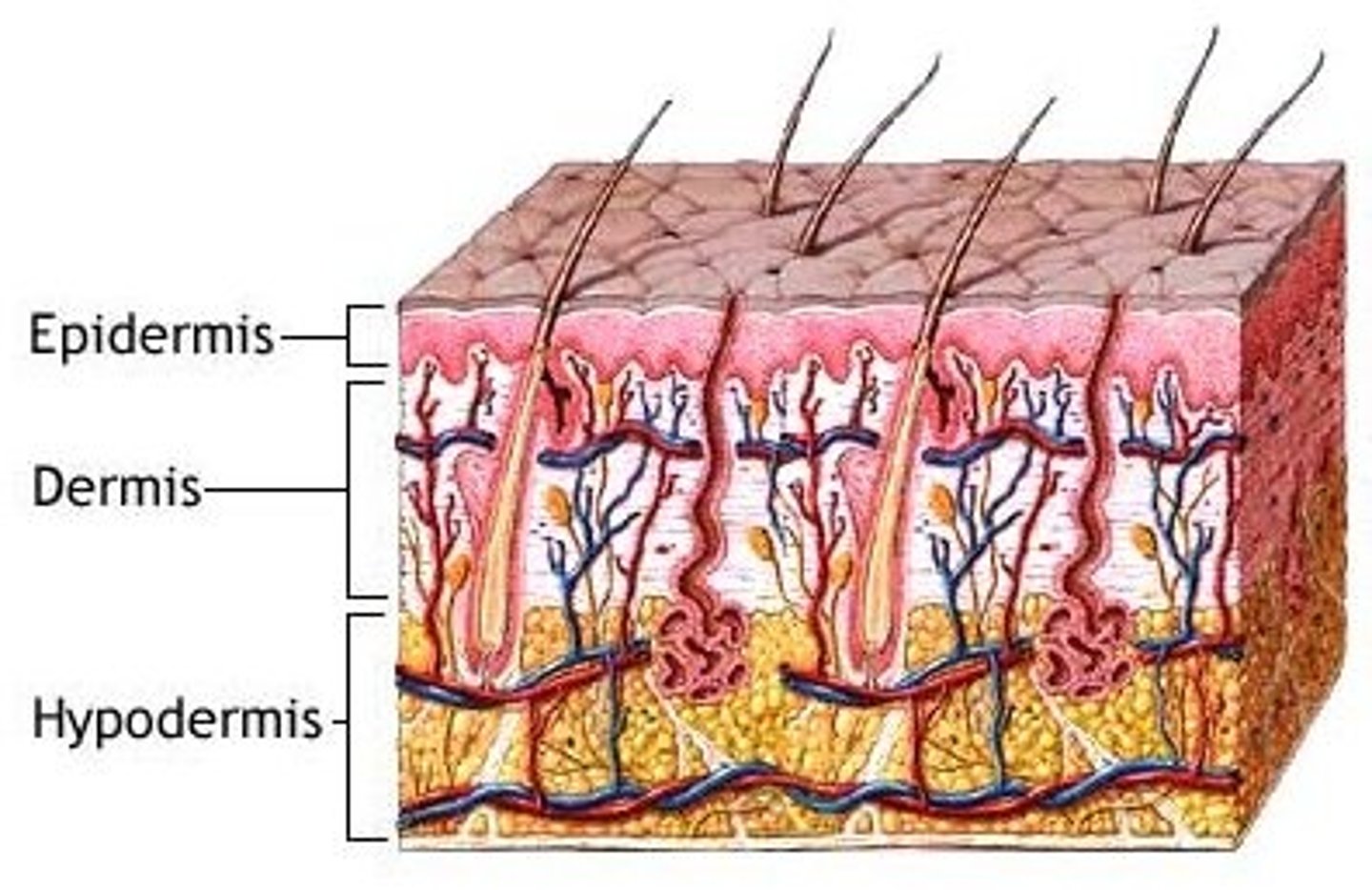
Eccrine Glands
glands that produce sweat; found over most of the body

Apocrine Glands
Sweat glands in the pubic and underarm areas that secrete thicker sweat, that produce odor when come in contact with bacteria on the skin
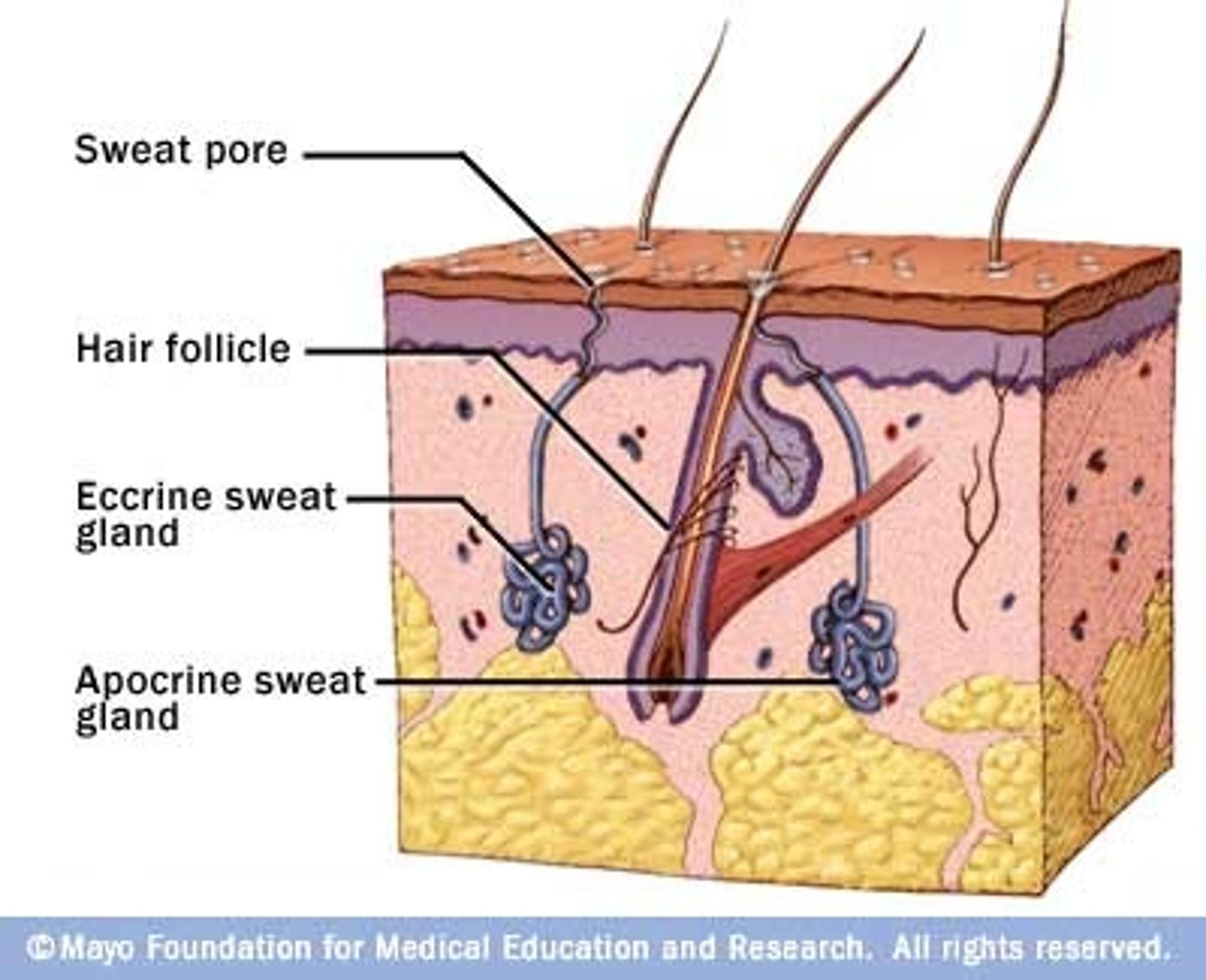
Pacinian Corpuscles
respond to deep pressure and vibration
